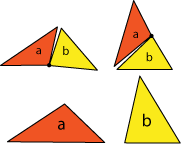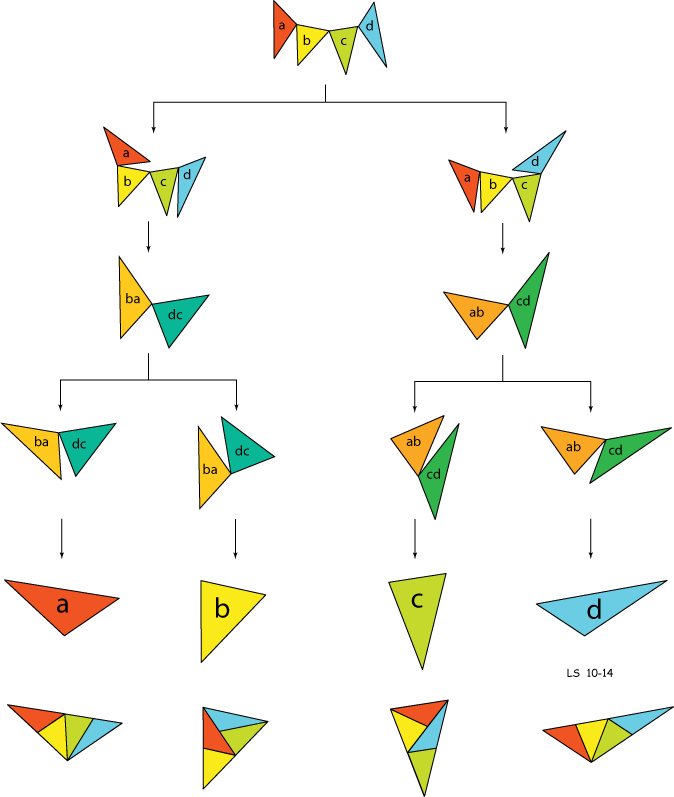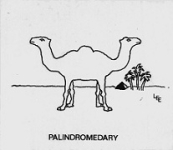 |
Lee Sallows |
|
| Home > Self-Tiling Tile Sets | ||
Self-Tiling Tile SetsA self-tiling tile set or setiset of order n is a set of n planar shapes, each of which can be tiled with smaller replicas of the complete set of n shapes. The topic was introduced in my article On Self-Tiling Tile Sets that appeared in Mathematics Magazine for December 2012 (Vol. 85, No. 5). The article includes a link to this site, where data that was too extensive to include on the printed page has been made available to readers. A Wikipedia article on the topic (somewhat better than this one) is also available. Usually we are considering sets using distinct shapes, but a special case is when all are identical, in which case the setiset corresponds to a rep-tile or self-replicating tile. Setisets are thus a generalization of rep-tiles. An example of a setiset of order 4 using distinct pieces is seen here:
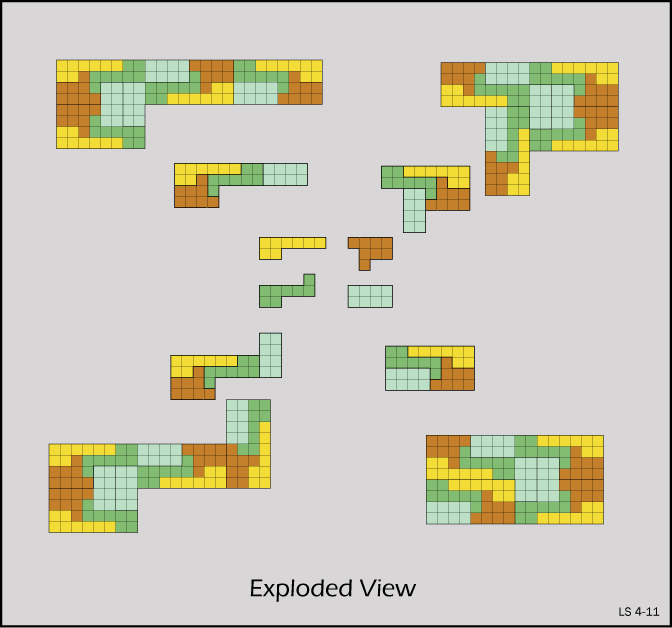
In October 2014 I was contacted by Dale Walton, a highly creative researcher and tiling theorist, who showed me some setisets he had produced composed of 4 distinct triangles, a contingency quite new to me. Until then, the only setisets of triangles I had met were of order 2. By examining his specimens it was easy to conjecture their method of construction, and thereby to discover that his examples were particular instances belonging to an infinite family of setisets. His method can be described in different ways, perhaps the simplest of which is as follows:
Take any triangle, T, and divide it along any of its medians into two halves. Repeat this with a second copy of T, but now using a different median. The four resulting triangles form a setiset. Since T can be any triangle we please, the number of different setisets producible is limitless. Besides which, any particular T can give rise to three distinct setisets depending upon which two medians are chosen. Note however that if T is isosceles or equilateral then the setiset triangles will not all be distinct.
After producing a few setisets of my own using this method, it occurred to me to wonder whether one of the triangle pairs could simultaneously form a setiset of order 2. The construction of the latter is discussed in detail in On Self-Tiling Tile Sets. So I took such a setiset pair, constructed two further triangles as required, and so ended up with a setiset of four distinct triangles, two of them comprising a setiset of order 2.
Now a distinctive property of order 2 setisets using triangles is that they form a hinged dissection; a single vertex in each triangle is joined by a hinge. Call the two triangles a and b. At one extremity of the hinge they form a larger triangle with shape a, at the other, another larger triangle with shape b, as shown here:
I was thinking about this when in a flash the question sprang to mind: Could it be that the four triangles in the new setiset can also be hinged together? It took but a few minutes to find out. The happy result can be seen in the diagram below.
In the diagram, the four triangles a, b, c, d, are hinged together at their vertices so as to form a chain. The chain can be folded up in different ways, four of which issue in triangles that are twice-sized copies of a, b, c, d. The assembly could thus be called a self-duplicating dissection, in contrast to the familar type of dissection in which one shape becomes transformed into another. So in this set of 4 triangles a and b form a setiset of order 2, although Dale Walton's method will always yield hingeable setisets of order 4, whether or not they include within themselves (sub)setisets of order 2. |
||
| Last Updated: 14-6-2020 |
||
| Copyright © Lee Sallows | ||

.png)
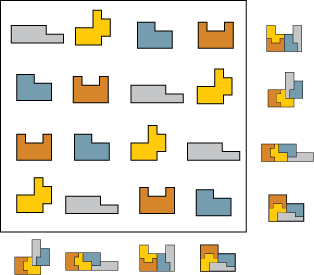
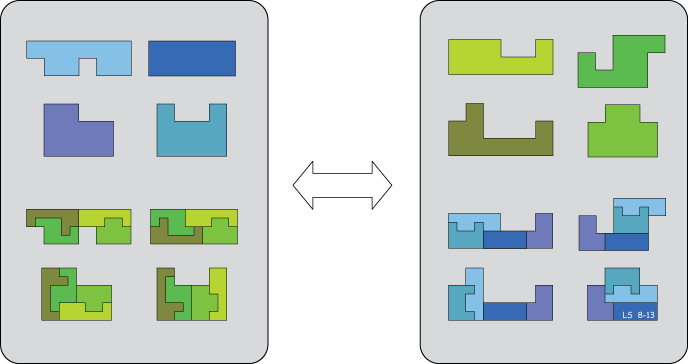
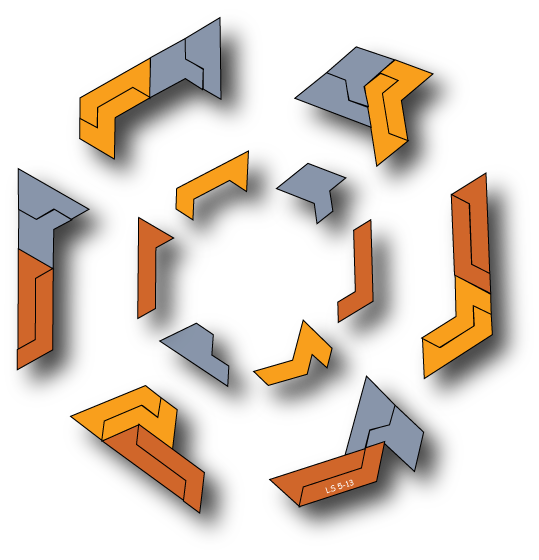 Each of the six pieces can be tiled by some four of them. Is this just a particular case of a more general type of self-replicating set in which every piece is tiled by some subset of pieces? I suspect so, and there is evidence to suggest that there may exist still stranger fauna awaiting discovery. My guess is that it may be a long time before we can draw up an exhaustive taxonomy of self-replicators.
Each of the six pieces can be tiled by some four of them. Is this just a particular case of a more general type of self-replicating set in which every piece is tiled by some subset of pieces? I suspect so, and there is evidence to suggest that there may exist still stranger fauna awaiting discovery. My guess is that it may be a long time before we can draw up an exhaustive taxonomy of self-replicators.